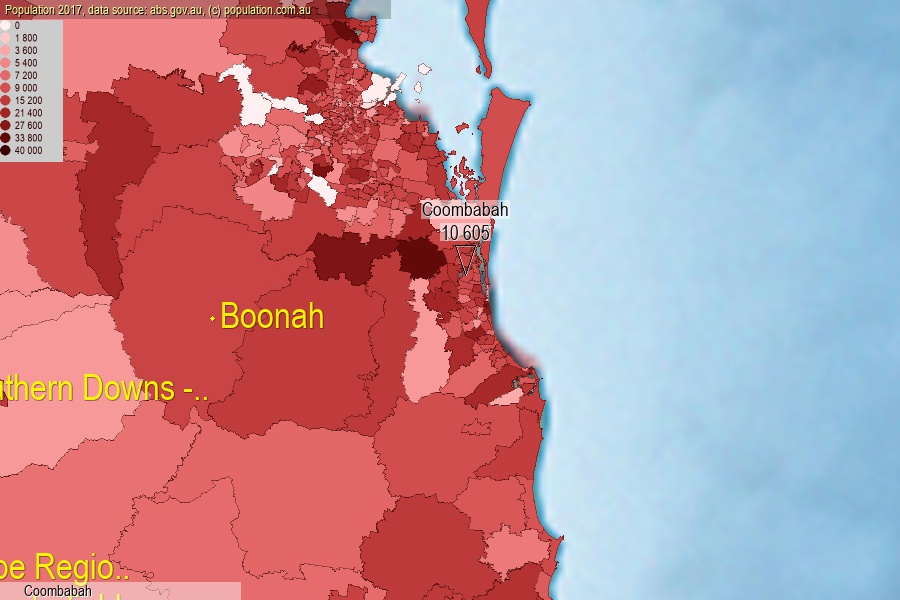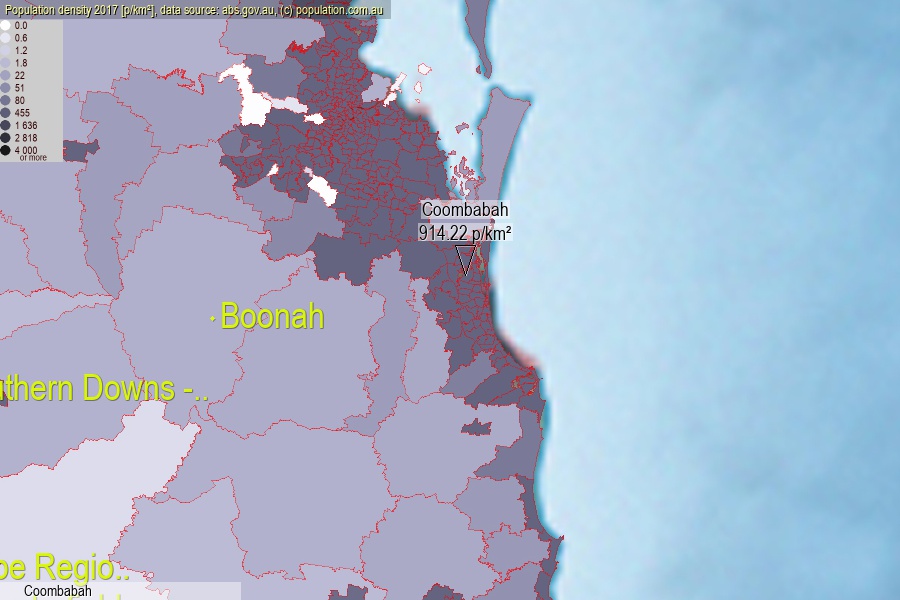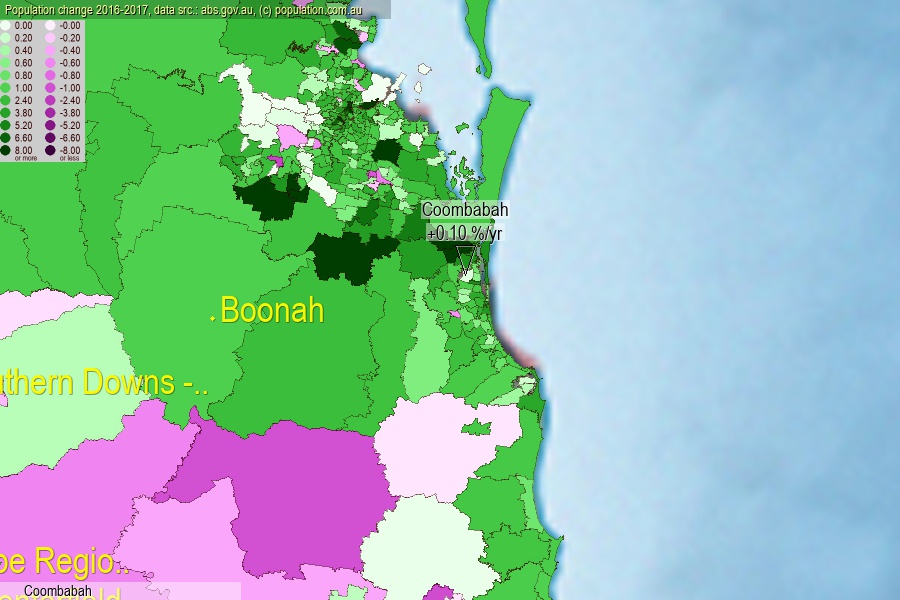 population.com.au
population.com.auLast official estimated population of Coombabah (as Statistical Area Level 2) was 10 605 people (on 2017-06-30)[2]. This was 0.04% of total Australian population and 0.212% of QLD population. Area of Coombabah is 11.60 km², in this year population density was 914.22 p/km² . If population growth rate would be same as in period 2016-2017 (+0.1%/yr), Coombabah population in 2025 would be 10 693. [0]



Click to enlarge. Coombabah is located in the center of the images.
Population [people], population density [p./km²] and population change [%/year] [2]
View borders » (new window) [4]
[1991-1992] +10.73 %/Yr.
[1992-1993] +13.18 %/Yr.
[1993-1994] +14.06 %/Yr.
[1994-1995] +10.42 %/Yr.
[1995-1996] +6.98 %/Yr.
[1996-1997] +8.94 %/Yr.
[1997-1998] +7.58 %/Yr.
[1998-1999] +3.76 %/Yr.
[1999-2000] +1.83 %/Yr.
[2000-2001] +3.47 %/Yr.
[2001-2002] +1.39 %/Yr.
[2002-2003] +0.70 %/Yr.
[2003-2004] +0.96 %/Yr.
[2004-2005] +1.11 %/Yr.
[2005-2006] +1.11 %/Yr.
[2006-2007] +0.84 %/Yr.
[2007-2008] +1.60 %/Yr.
[2008-2009] +1.02 %/Yr.
[2009-2010] +0.91 %/Yr.
[2010-2011] +0.95 %/Yr.
[2011-2012] +1.83 %/Yr.
[2012-2013] +1.30 %/Yr.
[2013-2014] +0.87 %/Yr.
[2014-2015] +0.08 %/Yr.
[2015-2016] +0.92 %/Yr.
[2016-2017] +0.10 %/Yr.
[0] Calculated with linear interpolation from officially estimated population
[1] Read more about SA2 and Australian Statistical Geography Standard (ASGS) on abs.gov.au
[2] Population data from Australian Bureau of Statistics (Population and density: 2017; change: 2016-2017)
[3] Digital Boundaries: Australian Statistical Geography Standard (ASGS) 2016.
[4] Border coordinates are simplifyed using Ramer-Douglas-Peucker algorithm.